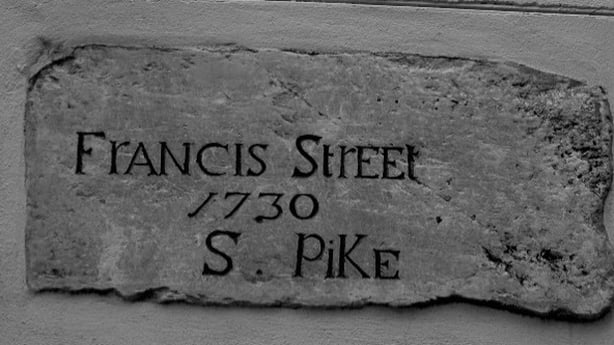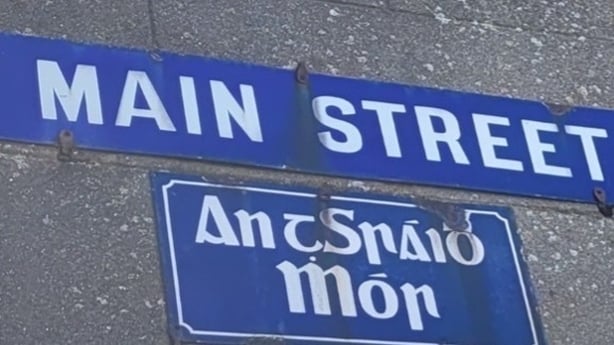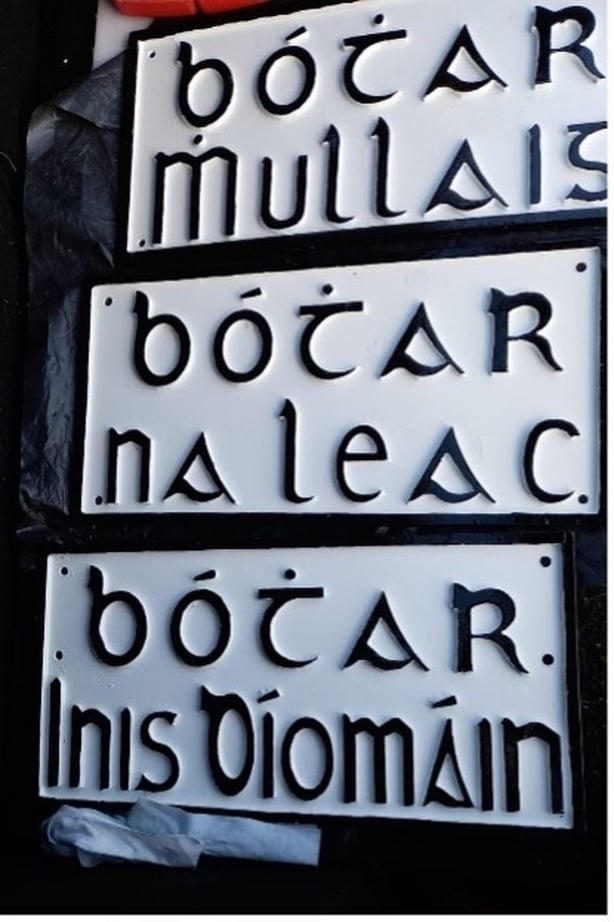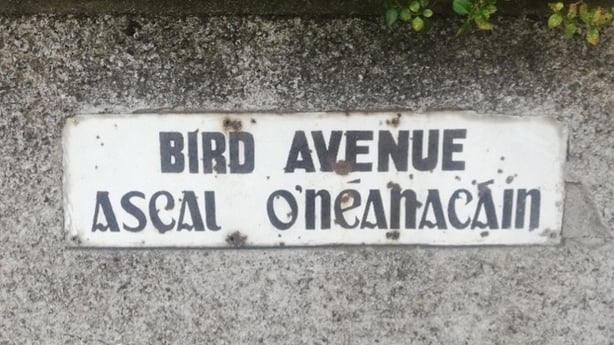Analysis: Bilingual signage is one of the most distinctive things about the streets in Irish towns and villages
One of the most distinctive things about the streets in the towns and villages of Ireland is the bilingual signage one encounters. Many people may think that this arose after independence in 1922, but in fact the process of signing streets in Irish and English began more than 20 years beforehand.
It is ongoing in areas of Northern Ireland with Irish or Ulster Scots being added to street signage which until recently only displayed English versions of placenames. In 2021, it was proposed in Derry (as in Belfast) that the threshold of support for successful applications for bilingual signage be lowered from 66% of residents to 15% to make it easier to introduce the new signs.
The entire issue of placenames in Ireland is a thorny one. All countries feature placenames whose roots come from the lay of the land and geographical features (topography). Many have placenames from extinct or minority languages (for example 'York' in England is a version of the Viking ‘Yorvik’, which it turn, leads back to Roman ‘Eboracum’, which itself had Celtic roots.)

Some modern nations, many of them former colonies, have non-native names imposed upon them: for example, the island of Manhattan first hosted the town of New Amsterdam and then the city of New York. While the new name sometimes obliterates the old, they often exist in uneasy proximity other times. Ireland has all these phenomena, especially when it comes to how the Irish language has been integrated.
The earliest street sign I am aware of is from 1730 and is in Cork (where all the best things are, of course). As well as naming the street in a charming mixture of capitals and lower-case letters, it commemorates the developer of the area, a Quaker, Samuel Pike. Based on my research in Cork and Dublin, Irish language signs arrived long after English language ones. There are early 19th century examples of inscriptions in Irish on funerary monuments, but Irish appears to be completely absent from public signage before 1899.
Spurred by curiosity about how local placenames are recorded and presented on our streets, a survey of Cork city was undertaken in 2012, leading to the publication of my book Layers about the story of the city’s signage the following year. Examples and stories from Dublin, Clonmel and elsewhere were included so it's not all Cork. Since the publication of the book, members of the public have written to me with queries, suggestions and requests about signage and placenames in their vicinities.

Andy Coghill got in touch from Athlone about two signs which he was curious about. 'I saw this Gaelic script font sign in Athlone on Main St. beside the castle opposite Sean's Bar. I was wondering how old it was? It's about the only one left of its type left in the town.' He wondered whether they were erected at the same time.
Both of the signs are made from enamel-coated steel and date to the either side of the turn of the 20th century. They were created by depositing a slurry containing finely-ground glass onto steel plates and baking them at high temperature. The same process is still used for making nameplates in Paris and for the London Underground. It seems that the English sign was erected first, and some time later, probably after lobbying by local nationalists, the Irish one was added. The use of Irish for public signage was theoretically illegal at the time, but was a popular cry from the first generation of nationalists elected under a mass-mandate in local elections after 1898.

Majella Corcoran from Cork said her father, Cyril Jones from Miltown Malbay, Co. Clare, was inspired by the few remaining examples of early Irish language signage in his town to create replicas for some of the streets. According to Majella, he had 'been organising the restoration and replication of street signs … which were originally erected by Tomás Ó hAodha in the latter years of the 19th century or early years of the 20th.'
As in the case of Athlone, these signs were probably set up around 1900 in a wave of Irish-language activism. The earliest record I had found for Irish-language signage like this was 1901 in Blackrock, Co. Dublin, but, thanks to the Conradh na Gaelige website which has digital copies of the magazines Fáinne an Lae and An Claidheamh Soluis. Majella 'discovered that the signs were erected in August 1899', which probably makes them the earliest known of their kind and historically significant.
From Miltown Malbay Community Centre, Cyril Jones: Street Sign Restoration Project in Miltown Malbay
When bilingual signage, as opposed to supplementary signs in Irish, began to be installed, Irish was placed above English. You can see this in the Lurgan Street sign which is the main picture on this piece This situation, literal and political, demonstrates the ideology of those commissioning the designs, and was later reflected in the Irish Constitution where Irish is seen as the first among equals of our two official languages.
However, Killian Barry of Clonskeagh, Dublin, spotted an exception to the rule, which is Bird Avenue in Clonskeagh. In this example , English predominates, although the Irish language version of the name is considerably longer. (This is generally the case, and often leads to the words being truncated, as in 'Sr. na Lorgan'.) Choosing English first is most unusual, and could be read as revealing a certain lack of enthusiasm or paying lip service to the language revival by the erectors.

Whilst the Irish letters are lovely, the translation is odd. The Irish version of the placename is not a simple translation of 'bird' to ‘éan’. Maybe ‘Bird’ was a familial name; a landowner perhaps? Was ‘Ó Néanac(h?)áin’ the name of a local patriot, or other notable? One finds in the early bilingual signages that there was often a degree of enthusiasm in the translation, rather than accuracy, and also a tendency to use archaic forms of the language culled from ancient manuscripts.
While we take it for granted, and often overlook it, signage in Ireland can provide a window into local history, culture and language. As these examples show, it's a place to explore the complexities of the built environment, rendered in steel, stone or enamel.
You can read more about Dublin street signs here. This research was funded under a Postdoctoral Fellowship grant from Taighde Éireann/Research Ireland. Designed for Life: Architecture and design in Cork city, 1900–90 by Tom Spalding is published from Cork University Press
Follow RTÉ Brainstorm on WhatsApp and Instagram for more stories and updates
The views expressed here are those of the author and do not represent or reflect the views of RTÉ



